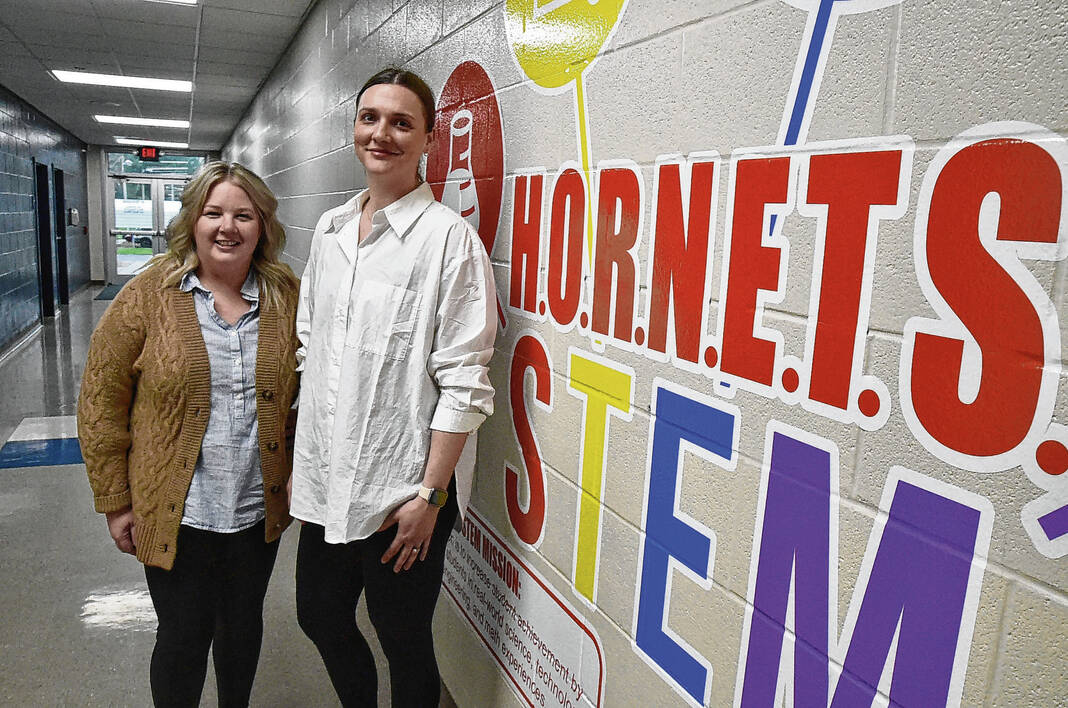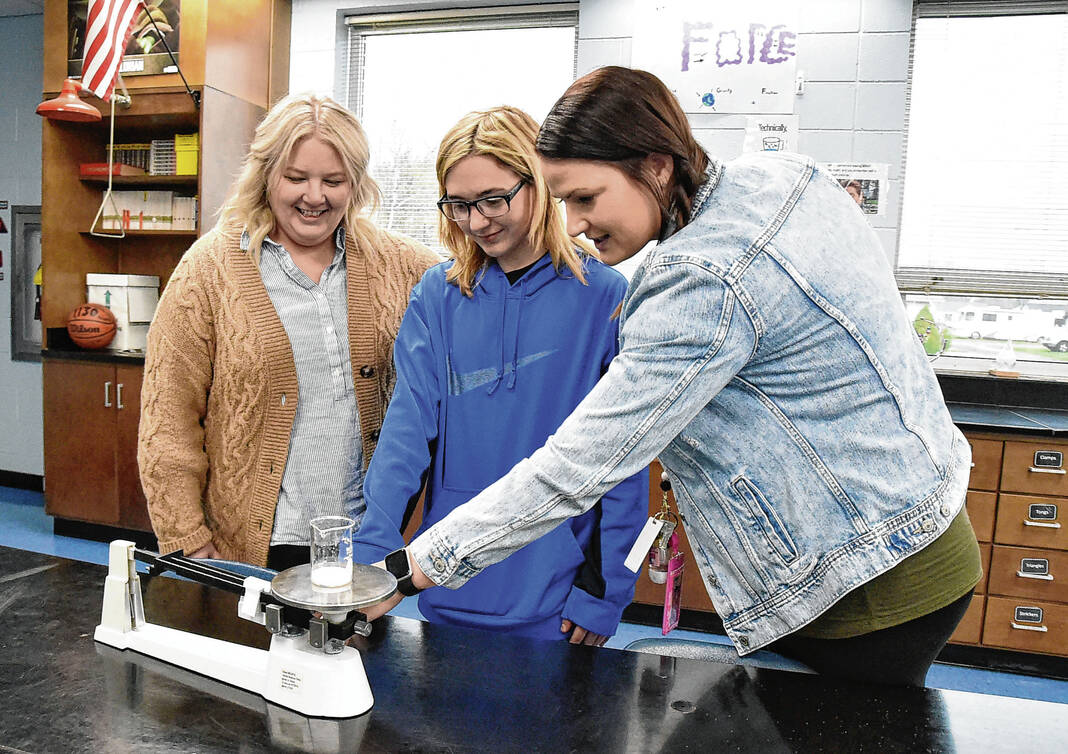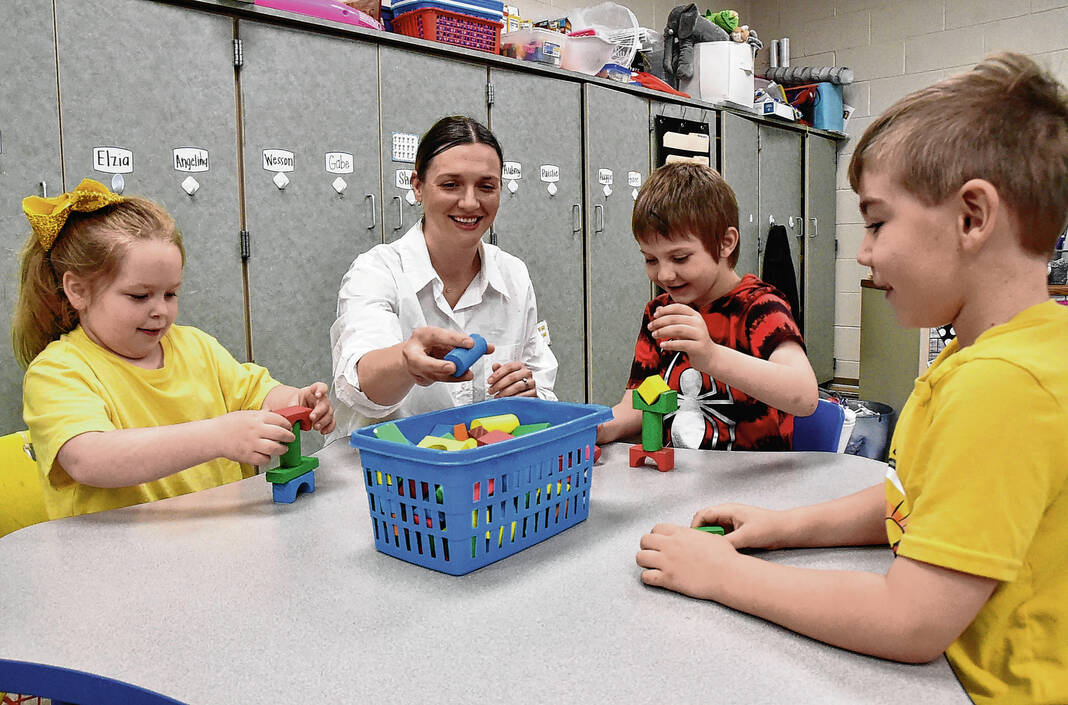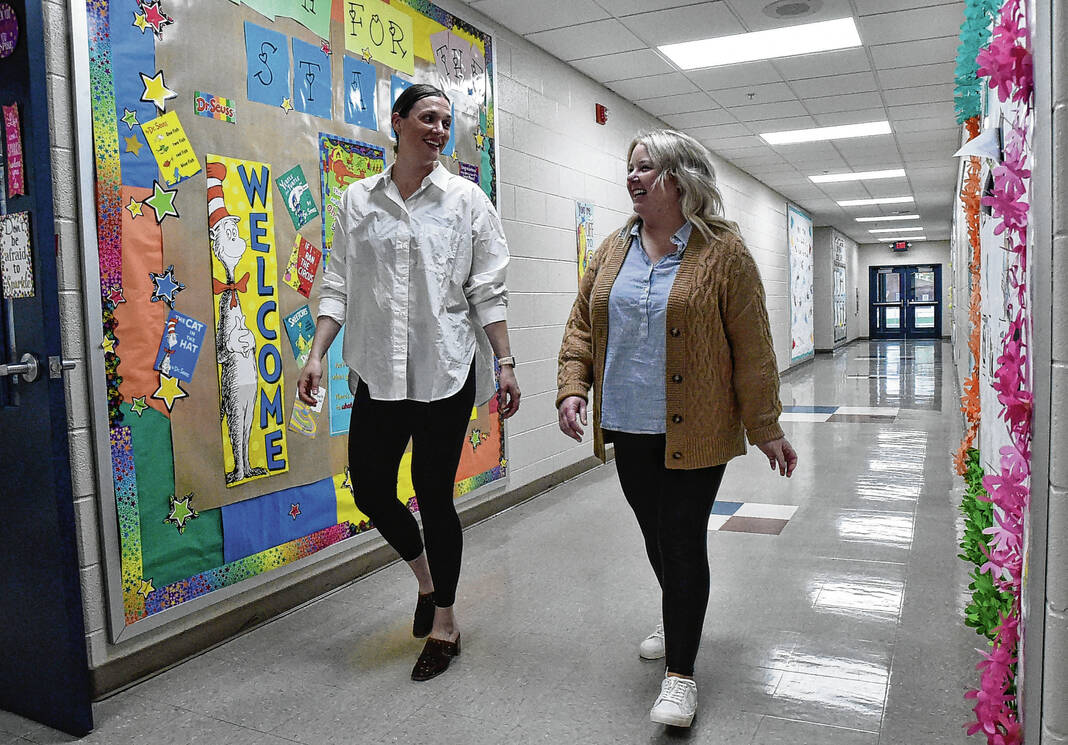MEDORA — From implementing STEM and Project Lead the Way to expanding class offerings to adding teachers, Medora Community School Corp. has accomplished a lot in recent years.
Austin Skutnik and Kara Hunt consider themselves fortunate to be a part of it all.
Skutnik began teaching at one of the smallest public schools in the state in 2013 and became principal in the 2016-17 school year. Hunt came to Medora in the 2018-19 school year as a STEM facilitator and now is dean of students and athletic director.
As of July 1, though, they will take on different titles.
The board of school trustees recently approved Superintendent Roger Bane’s recommendation to name Skutnik principal of Medora STEM Academy and Hunt principal of Medora Junior-Senior High School, effective July 1.
That will mark the first time since 2011 for Medora to have two principals.
“Having a superintendent that has the foresight to see opportunities in people, it would probably be easier just to keep one person and continue the way things have been going, but that’s not really how you grow,” Skutnik said. “That’s something that we tell our students and we have those conversations with teachers, growth and change are uncomfortable, but it’s something we’ve done a lot over the last several years, and it pays off.”
Hunt said STEM was a big part of her job in the beginning, and after the school became certified in that, her role changed to administrator.
At the beginning of this year, Skutnik said Bane shared his idea of two principals with her and asked which role she preferred. She chose the elementary.
“It’s kind of interesting. I think it sort of surprised a few people because I do have a secondary (education) background,” she said. “It’s a new challenge for me, it’s a growth opportunity as an administrator and it’s just what I want to do right now. I’m going to give it a go.”
Hunt had an elementary education background but taught at Crothersville-Junior Senior High School for 10 years before getting hired at Medora.
“When I came here, I fell back in love with the elementary, kind of what I originally planned to do in the beginning, so I’d spend a lot of time working with the elementary teachers, the elementary kids as part of that STEM certification,” she said.
Along the way, Hunt and Skutnik have been focused on the elementary a lot to get that solid foundation.
“I feel like we’ve got the right people teaching the right grades, and everything has just really came together well there,” Hunt said. “I’m excited to start with the junior-senior high school and build on what we’ve already established in the elementary. I’m excited to start forming those closer relationships with the junior-senior high teachers. I really believe that who your teachers are affects your school more than anything else.”
With new classes and teachers added in recent years, including agriculture and computer science, Hunt said the right people are in the right places in the junior-senior high school, too.
“I’m excited to see where the junior-senior high can go,” she said.
Since going back to two principals was approved, Skutnik said a lot of work has been done to define their roles and responsibilities.
Currently, Hunt is responsible for student discipline and attendance and contact with parents about those issues, while Skutnik is primarily teacher-focused.
“One of the big things has been us trying to figure out ‘OK, what are each of our roles going to look like going forward, what does that mean for faculty and staff, who do they go to about certain things?’” Skutnik said. “So we have really been working on not necessarily chain of command but more like chain of communication just so people have a clear idea of what they need to go to certain people about.”
They also have been thinking about the direction of each school moving forward.
“What’s really nice about us having worked together over the last four years is we’ve worked together every single day and had these discussions, so as far as the goals and initiatives that we want to continue as well as introduce, we’re both on the same page,” Skutnik said.
Hunt and Skutnik have been talking to the teachers about school goals and developing three-year plans to achieve them.
At the elementary level, Skutnik said they are working on reapplying for STEM recertification, which is coming up in 2025.
“So just making sure that we’re continuing to grow that program and add new opportunities for students to be involved with STEM education and really grow that community piece,” she said. “We would really like to incorporate more of a service-based component to that, and that’s one of the discussions we’ve been having.”
They also are exploring ways to continue and get better at individualizing instruction, looking at each student’s needs and coming up with plans to support them within the classroom.
School improvement goals and plans also are on the list, including growing students’ summative assessment scores.
“We want our kids showing proficiency in ELA (English language arts) and math because if they are showing proficiency, that means that they are mastering the standards,” Skutnik said. “That’s one of the reasons we’re here. We need our kids to learn those standards and be proficient at those standards so they can go on and be successful in career, college, whatever path they choose.”
Elementary teachers continuing to do standards-based grading is a big focus in the coming years, too.
“That’s also going to help drive our remediation, our enrichment opportunities and be really intentional about instruction in the classroom,” Skutnik said. “This year especially, we’ve really got some awesome people in place that go above and beyond as far as offering help to students, building relationships with kids and overall just getting involved. We’ve got quite a few teachers that put in so much extra time with the kids outside of school.”
Hunt said continuing to work on summative assessment scores, including ILEARN, is important for the junior-senior high school, too.
“I feel like we’ve got that really solid foundation and have done some really great things at the elementary to help those kids, and we’re just continuing that through the junior high for the kids that do ILEARN,” she said.
A big focus for the high school is the pathways to graduation and involving service learning.
“That’s going to be added in next year, getting in more dual credit classes, so those past high school, they can help, whether it be career-focused or dual credit classes to help them get ready for college,” Hunt said.
The school also will be hiring an athletic director since Hunt will be in her new role.
Considering the growth in recent years, Hunt and Skutnik have a lot to look forward to at Medora.
“I went to a small school and love working at small schools. I think Medora is a great community,” Hunt said. “I think that we’ve got the right people in the right places, and they really love this school, too. … It just really speaks to the culture of the community, of the building, even around town just more things happening here in the past few years. It’s a good thing for the community. It’s a good thing for the school.”
Skutnik said the students are noticing, too.
“I think there has just been a culture shift, and it hasn’t happened overnight. It has been years in the making,” she said. “I can tell such a huge difference in our kids from today as opposed to nine years ago. It’s a different place. … When people come into our building, I think they are so pleasantly surprised at all of the things they are seeing.”




